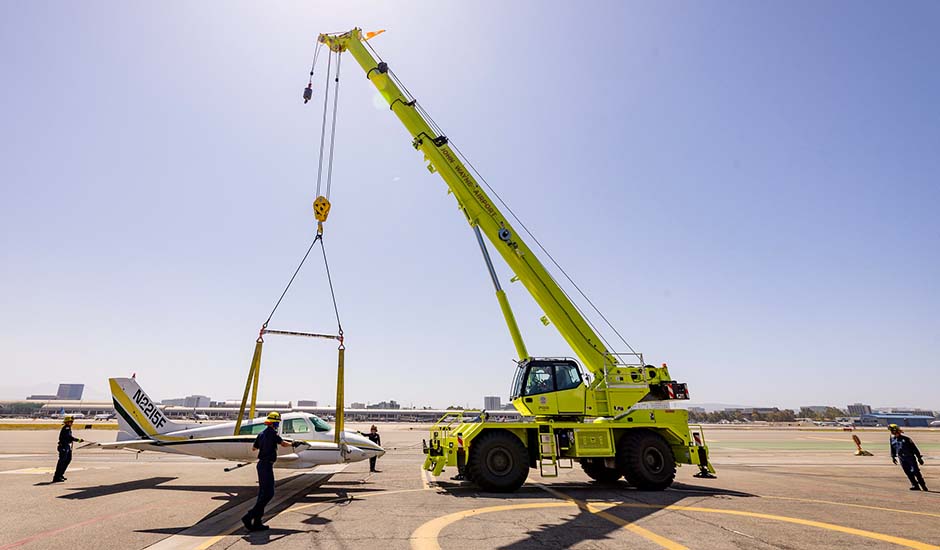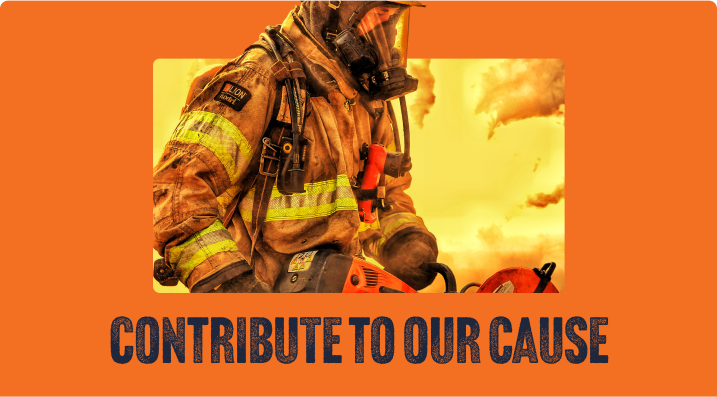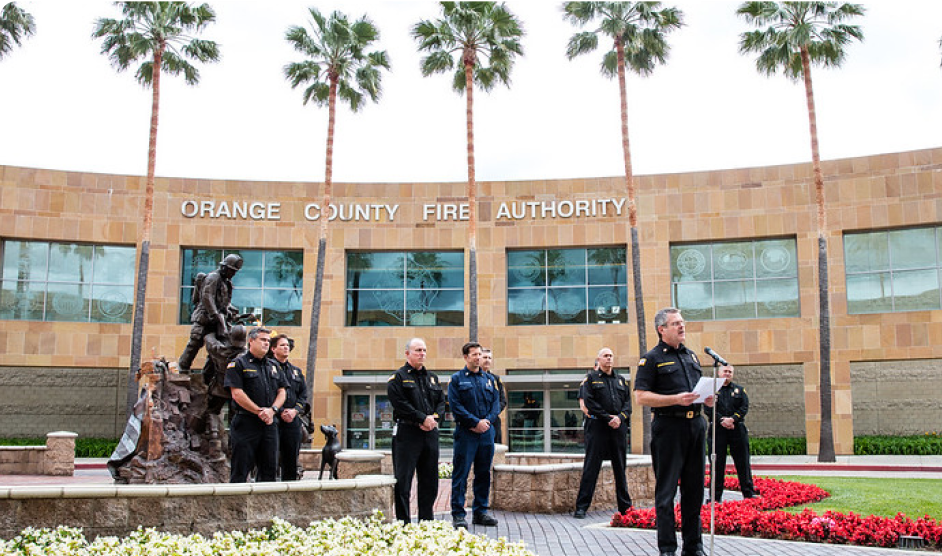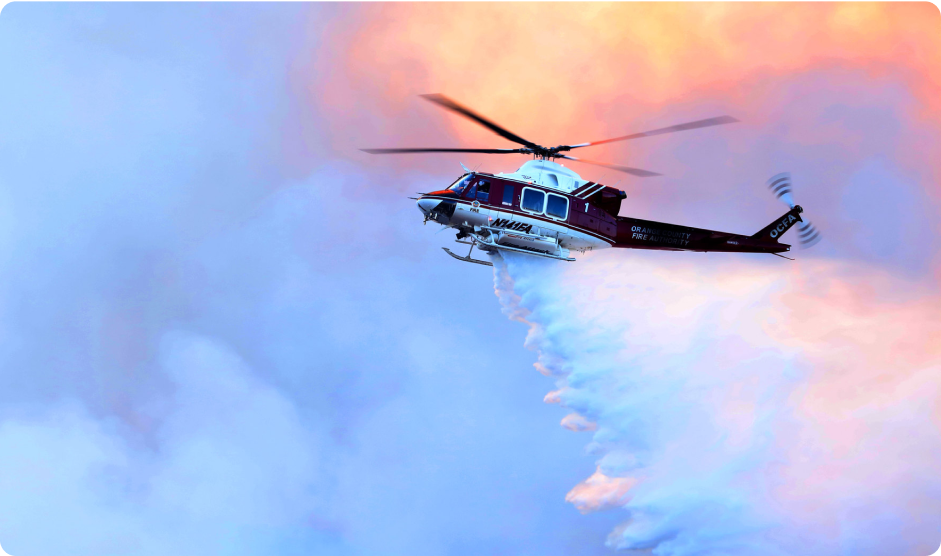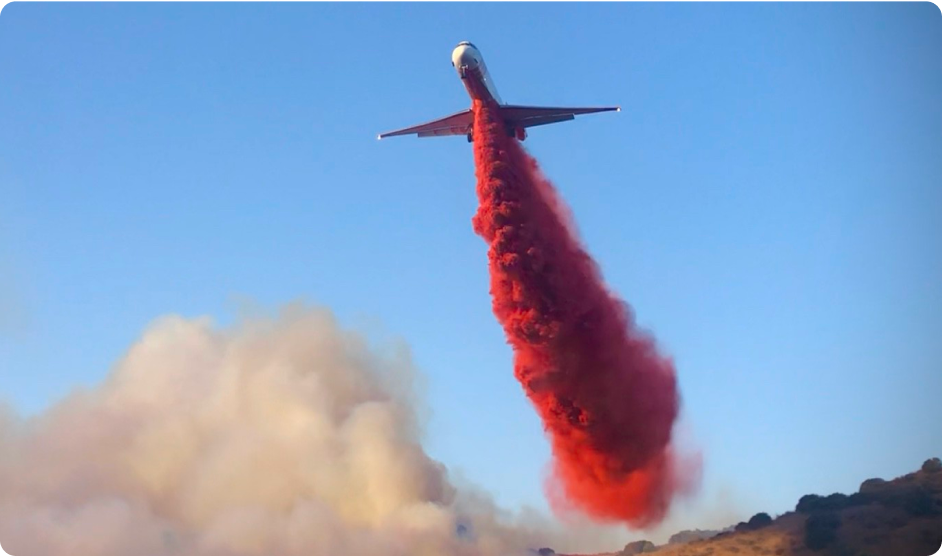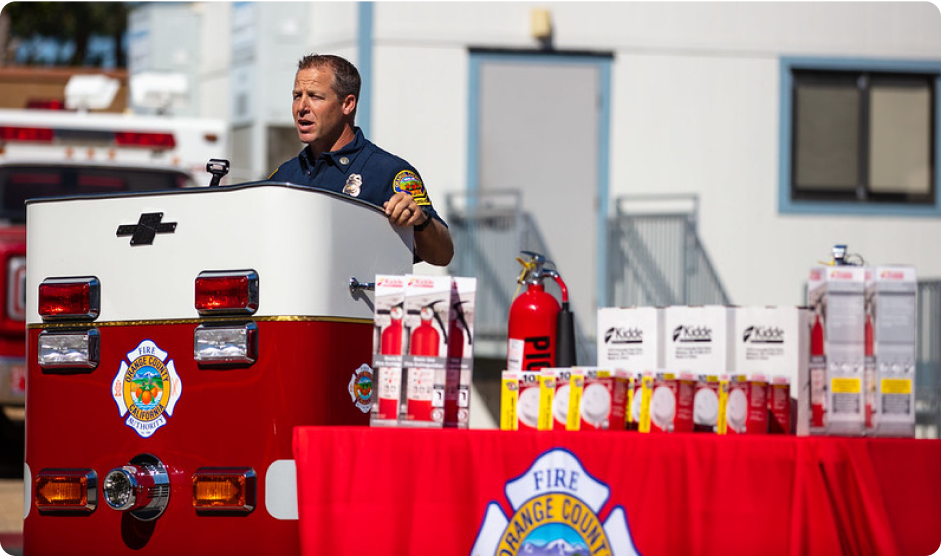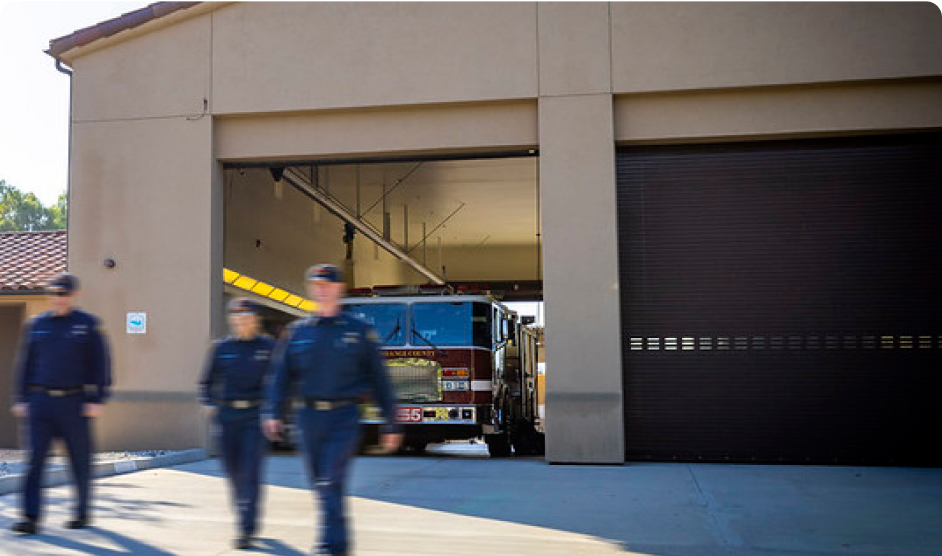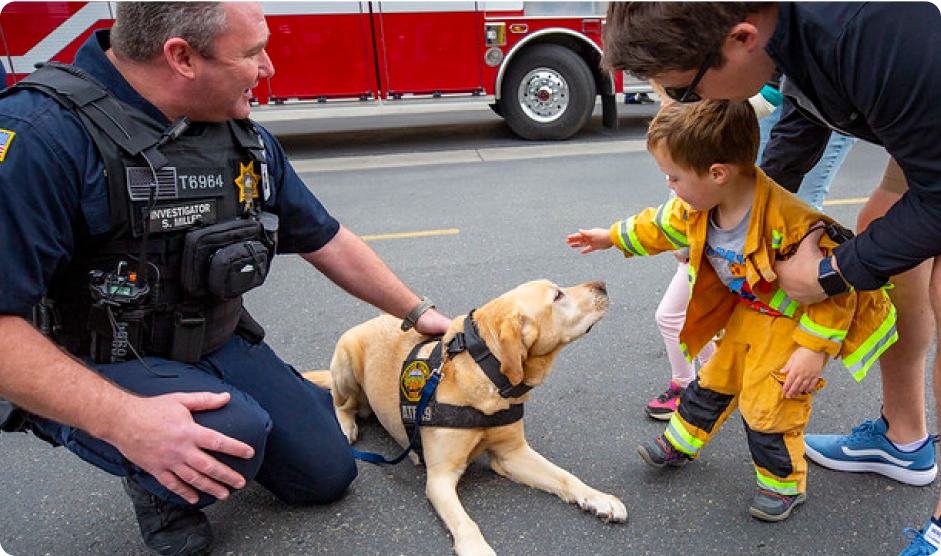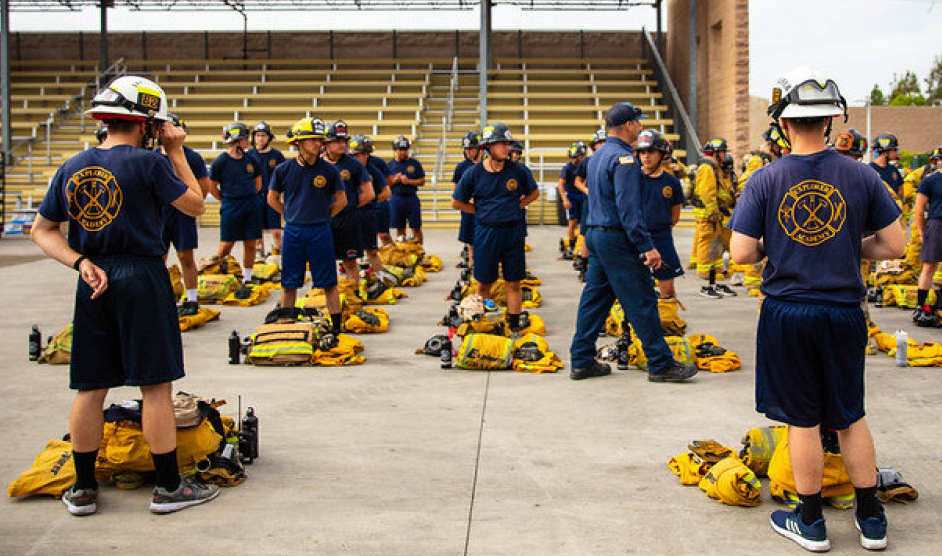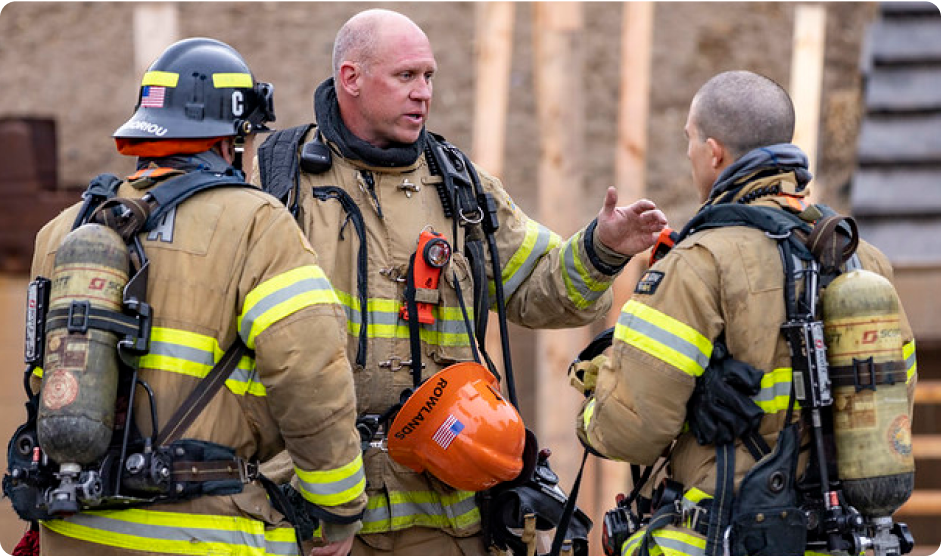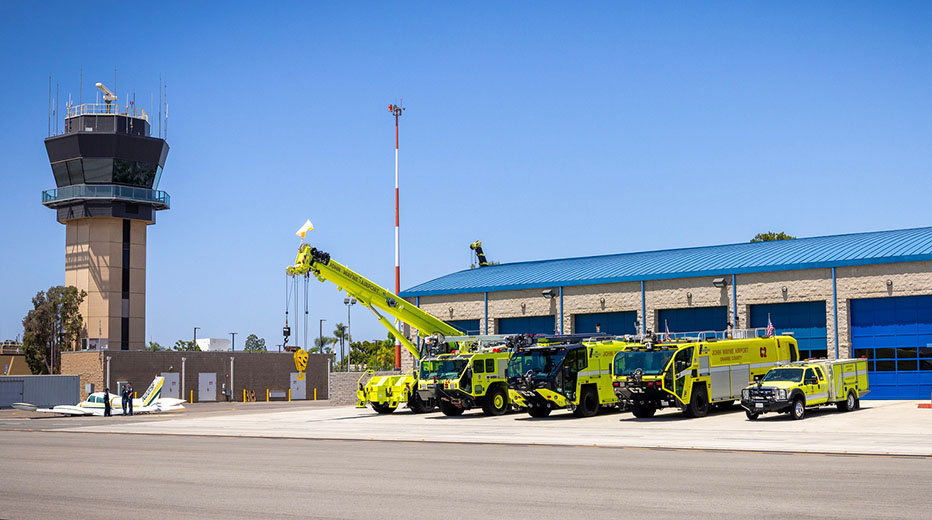
Airport Rescue Fire Fighting
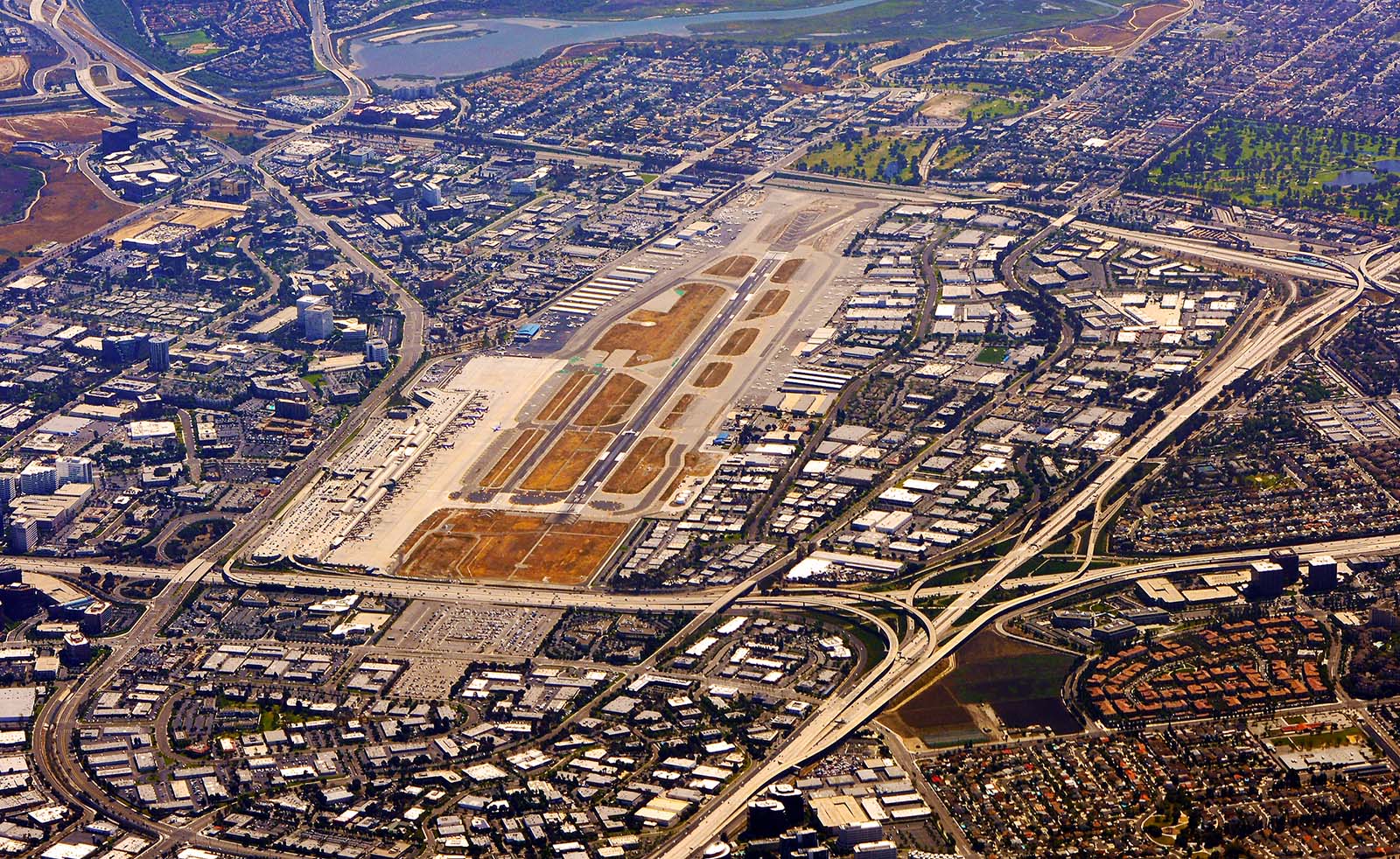
Photo courtesy of Don Ramey Logan from Wikimedia Commons, CC-BY 4.0
John Wayne Airport (JWA) is owned and operated by the County of Orange. It is the only commercial service airport in Orange County, and only one of two airports in the County that accommodate general aviation. It is located approximately 35 miles south of Los Angeles, between the cities of Costa Mesa, Irvine and Newport Beach. The service area includes more than 3 million people within the 34 cities and unincorporated areas of Orange County. Over 11 million passengers travel through the airport annually.
Its two runways serve commercial and private aircraft: a 5,700-foot main runway and a 2,887-foot general aviation runway. JWA is an Index Commercial Service airport with 22 air carrier gates. In addition to the commercial airline terminal, several facilities at the airport serve the general and corporate aviation community. JWA is served by three Fixed Base Operators (FBO) and is home to 475 general aviation aircraft. General aviation flights outnumber commercial operations daily. The largest passenger aircraft that serves JWA is the B-757. JWA also has two freight air carriers, FedEx and UPS, which operate at this busy airport.
On Duty Personnel
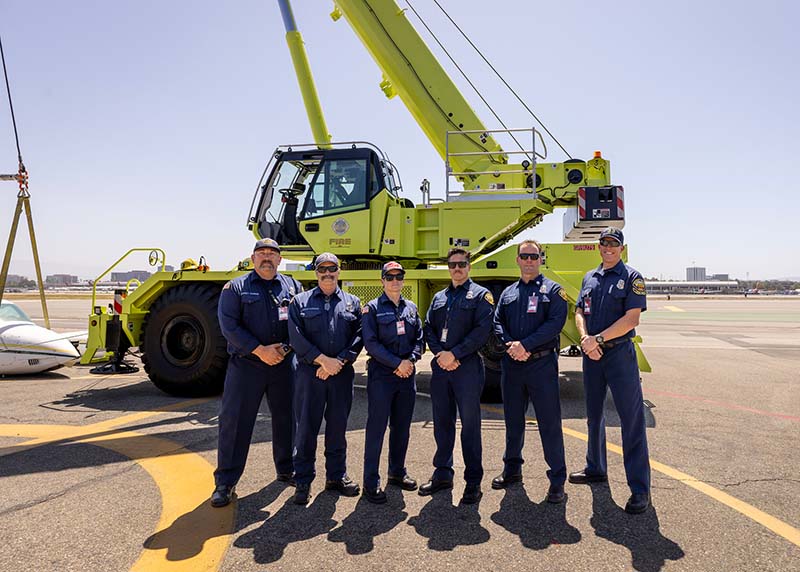
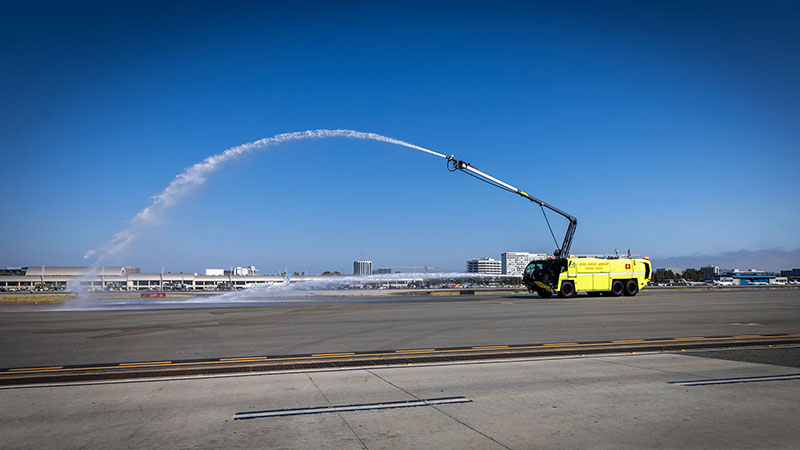
ARFF Training
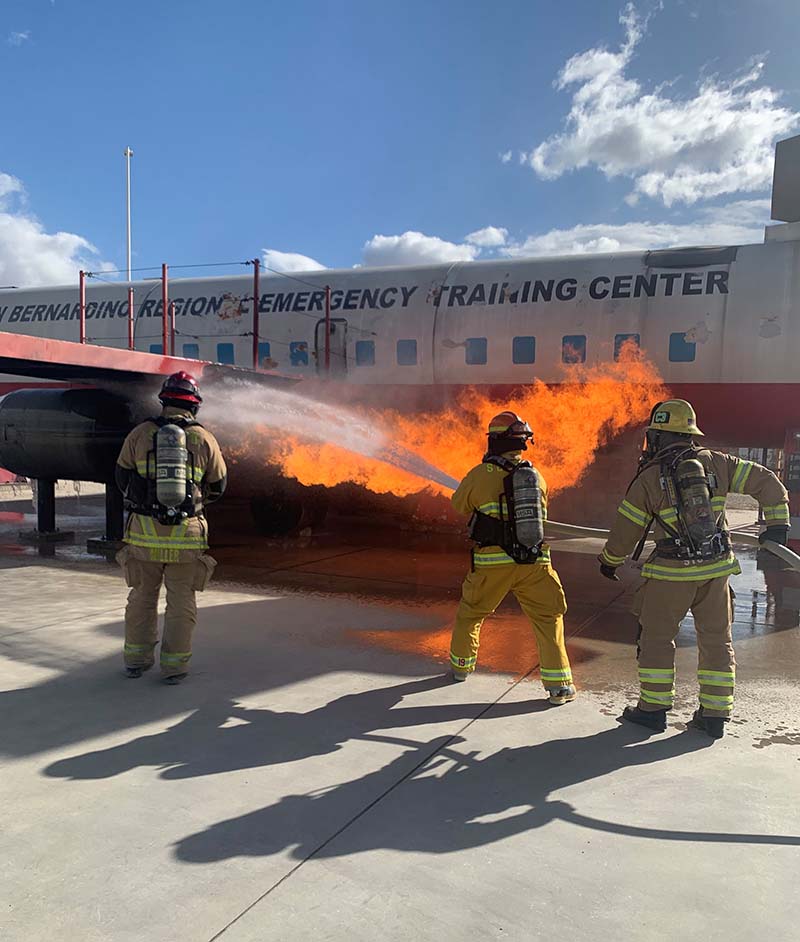
Firefighters assigned to the airport must be knowledgeable in the many facets of aircraft rescue and firefighting. In addition to basic firefighting knowledge, skills and abilities, personnel must learn to use specialized techniques, tools, and equipment to mitigate aircraft emergencies. Initial training includes attending a Federal Aviation Administration ARFF 40-hour basic training academy followed by an OCFA ARFF Academy, comprised of 40 hours of John Wayne Airport-specific training. They must also qualify for Security Identification Display Area (SIDA) credentials per the Transportation Security Administration requirements.
ARFF personnel maintain ongoing annual training, reviewing advanced techniques for firefighting, aircraft stabilization, removal and rescue of passengers. Training is a must in the ARFF world. In support of this, its members attend several classes and conferences across the country. There, members can see first-hand how aircraft are constructed including fuel systems, aircraft components, operational systems, etc. Learning how to access critical areas is vital for safe aircraft shutdown as well as rescue. This gives members the experience they need to address the various unique incidents they may encounter, from crane recovery operations, rotorcraft emergencies, to Advanced ARFF/Command and Control. Additionally, with two large on-site fuel farms located at JWA, ARFF personnel also attend Flammable Liquid School. There, firefighters learn how to combat large fuel farm fires as well as incidents related to transportation. ARFF also has responsibility for commercial and Part 139 fuel safety inspections as well as all the fuel safety training for the FBO.
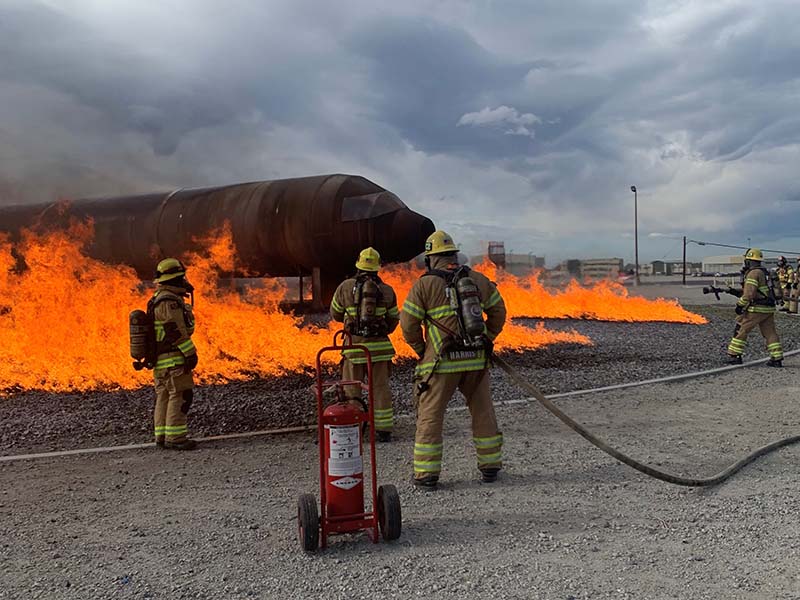
Response
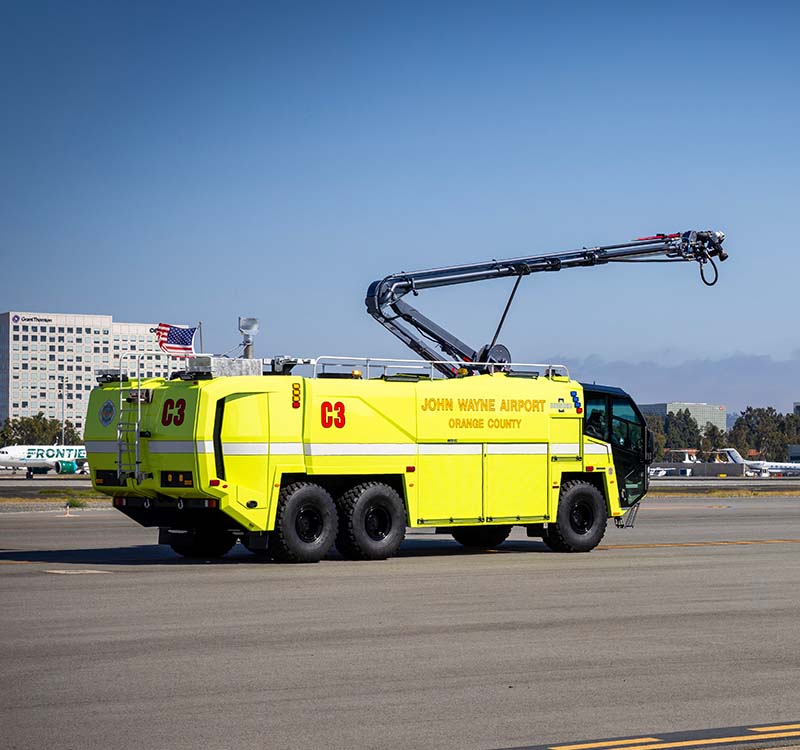
Working alongside Airport Operations, ARFF responds to all fire, medical and aircraft emergencies occurring in and around the airport with its primary mission being the airfield. Apparatus includes heavy “crash” rigs carrying 3,000 gallons of extinguishing agents, a command vehicle, a mobile Air Stair vehicle to facilitate passenger evacuations, and other supporting tools and equipment to serve the many challenging emergency needs of the airport.
Since JWA has only one commercial runway, ARFF personnel also staff a 75-ton crane and tug unit for aircraft removal. The unique addition of Crane 33 to airport responses brings the important enhancement should the JWA runway become blocked due to an aircraft incident. The result could restrict flight operations resulting in costly delays. Working in conjunction with JWA Operations, it is ARFF’s sole responsibility for the removal and recovery of all aircraft off the runways. This area of responsibility makes aircraft recovery one of the more unique challenges facing the group. As such, all ARFF firefighters complete a required National Commission of Crane Certification Training Course.
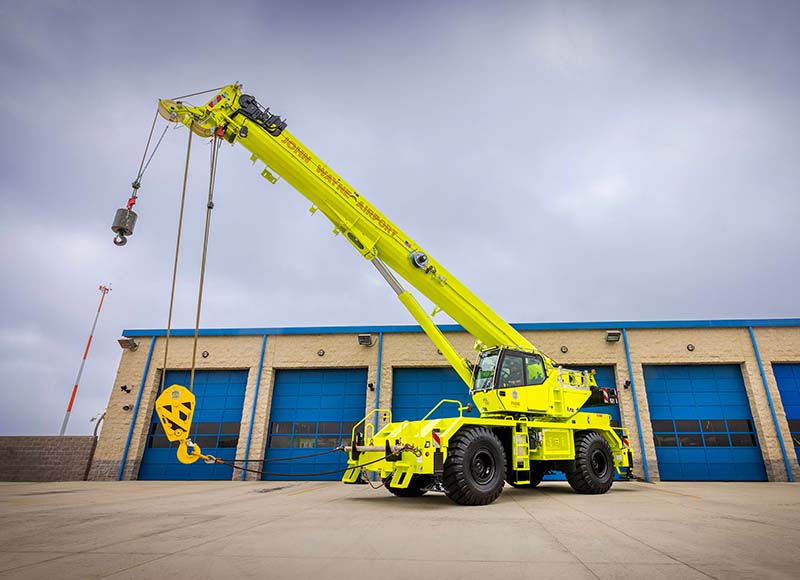
Off-site responses, although uncommon, do occur, and ARFF units are available to consult with on-scene resources or provide fire control. Hazardous materials of a large variety are present throughout the airport and ARFF plays a vital role in the inspection and control of these hazards.
All other incidents occurring at JWA are handled by the Orange County Fire Authority under contract with the County of Orange. Due to the range of specialized services and regulatory responsibilities, the airport fire department operates as a self-contained fire department within the larger OCFA structure.
Mission Statement

To provide the highest level of service and professionalism to John Wayne Airport through the Orange County Fire Authority in its delivery of fire suppression, aircraft rescue/recovery, hazardous materials mitigation, terrorism response, and emergency medical assistance.
